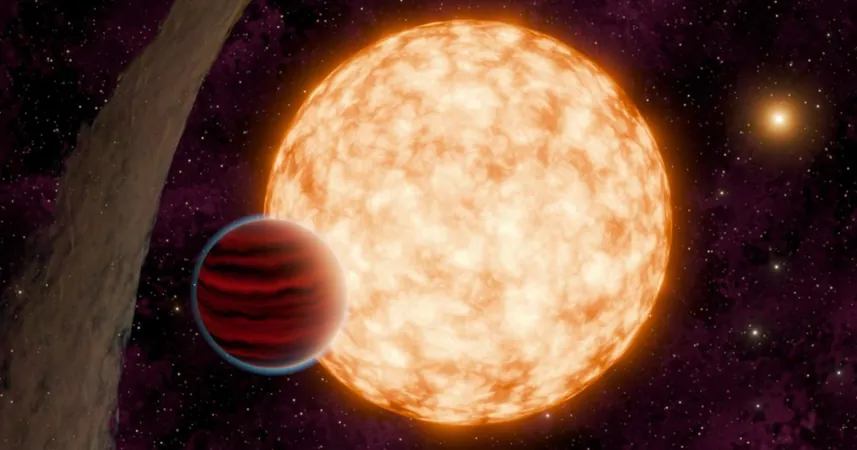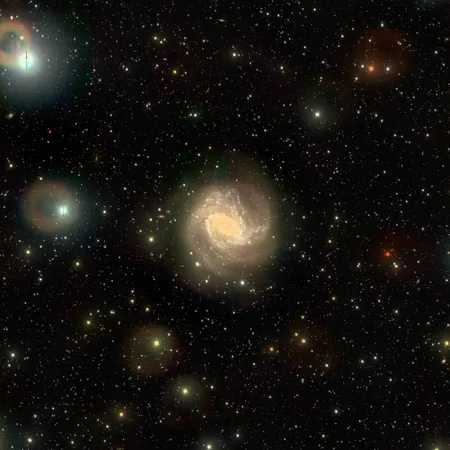
Close Call: International Space Station Dodges Major Collision with Space Junk!
2024-11-20
Author: Wei
International Space Station's Close Call with Space Debris
In a dramatic escape, the International Space Station (ISS) successfully avoided a potential collision with a piece of space debris on November 19. NASA confirmed that operators had to reposition the ISS, moving it out of the trajectory of the approaching junk—confirming fears that space debris poses a significant threat to the safety of astronauts and the integrity of the station.
The Maneuver
The ISS performed a Pre-determined Debris Avoidance Maneuver (PDAM) that involved firing thrusters on the docked Progress 89 spacecraft for more than five minutes. This adjustment increased the orbit of the station, moving it far enough away from a fragment of a defunct defense meteorological satellite that had broken apart in 2015. NASA reported that this debris was projected to come within approximately 2.5 miles of the ISS.
Successful Operation
"Without the manoeuvre, ballistics officials estimated that the fragment could have come alarmingly close," a NASA spokesperson said. Thankfully, the operation was successful and did not interfere with the station's ongoing scientific missions or the scheduled launch of the Progress 90 cargo spacecraft from Kazakhstan.
The Threat of Space Debris
The ISS orbits around 250 miles above Earth, where the risks from space debris are a constant concern. Reports indicate there are nearly 30,000 objects larger than a softball orbiting our planet, each traveling at hazardous speeds. This accumulation of remnants from old satellites, spent rocket stages, and other fragments means that the likelihood of collisions is an ever-growing threat.
Expert Opinions
The necessity of such maneuvering underscores a chilling reality. Experts from the orbital mapping company LeoLabs have likened the situation to a "ticking time bomb," highlighting the urgent need for better debris management in space. LeoLabs COO Dan Ceperly delivered a stark warning to Forbes: "This grim reality means that collisions are not a question of if, but when."
Crew Training and Protocols
In light of these rising dangers, the ISS crew is trained to respond to potential collisions. Astronauts are advised to seek refuge in their spacecraft if a significant danger from space junk arises, as previous incidents have shown just how catastrophic a collision can be. In worst-case scenarios, crew members may even need to make an emergency return to Earth.
The Ongoing Challenge
As the world watches the stars, the ISS continues its vital work in the realms of science and international cooperation, but the threat of space junk looms ever larger in the blackness of space. Will the safeguarding measures in place be enough, or is humanity's ambitious reach into the cosmos putting our astronauts at risk? The clock is ticking!



 Brasil (PT)
Brasil (PT)
 Canada (EN)
Canada (EN)
 Chile (ES)
Chile (ES)
 España (ES)
España (ES)
 France (FR)
France (FR)
 Hong Kong (EN)
Hong Kong (EN)
 Italia (IT)
Italia (IT)
 日本 (JA)
日本 (JA)
 Magyarország (HU)
Magyarország (HU)
 Norge (NO)
Norge (NO)
 Polska (PL)
Polska (PL)
 Schweiz (DE)
Schweiz (DE)
 Singapore (EN)
Singapore (EN)
 Sverige (SV)
Sverige (SV)
 Suomi (FI)
Suomi (FI)
 Türkiye (TR)
Türkiye (TR)